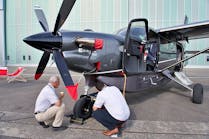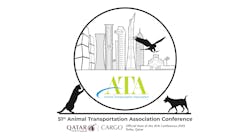The Voice of Aviation Maintenance: Game Plan
Sept. 5, 2017
Related To:
This week, 38 attendees representing aviation maintenance technician schools, industry employers and trade groups will come to Washington to sound a unified message: support aviation maintenance workforce development.
Attendees will educate lawmakers on issues that directly impact their ability to train or recruit the next generation of aviation maintenance personnel. As a community, aviation technician education has identified the following legislative priorities:
- Modernize outdated FAA maintenance technical school regulations. The regulation dictating what educational institutions must teach aspiring aviation maintenance mechanics has not significantly changed in more than 50 years. In an age where technological advances are constantly driving innovation for safer and more efficient aircraft, schools are required to teach techniques for constructing and maintaining the Wright Flyer. Industry is left with the cost of retraining graduates to complete basic tasks required to maintain a modern, sophisticated aircraft. Industry is implementing a grassroots campaign to ensure the agency has the resources, support and political backing to get the rule out. See related opinion piece from TheHill.com: Aviation struggles with 50-year-old maintenance training regulation.
- Ensure government occupational data accurately reflects aviation maintenance workforce needs. The aviation maintenance industry faces a workforce shortage, as evidenced by numerous economic reports including a recent Oliver Wyman forecast that predicts U.S. demand for maintenance technicians will outstrip supply by 9% in ten years. Bureau of Labor and Statistics (BLS) data unfortunately paints a much different picture, forcing industry to swim against the current when trying to recruit the next generation of aviation maintenance technicians. BLS growth projections forecast 4% growth for aviation maintenance careers, putting it low on the list of “preferable” occupations. This is a gross misrepresentation given calculations do not take into consideration aviation’s aging workforce—which affects maintenance technicians disproportionately when compared to other occupations. Further, growth projections are taken wildly out of context when fed into tools and resources such as MyNextMove.org—a Department of Labor job seeker assistance tool which gives aviation maintenance technicians a “below average” rating—and state funding programs that put aviation maintenance technician schools at a disadvantage over other career technical education programs. See related piece from trade magazine, Aviation Week: Labor Department Job Outlook Raises Questions.
- Support a Skilled and Dynamic Aviation Workforce. Despite facing a shortage of qualified technical workers, the aviation maintenance industry is growing and hiring. Federal funding and support of local workforce programs would train a new generation of skilled workers for high-paying jobs. Congress should focus on career and technical education programs that create new opportunities for collaboration between employers, government agencies and educational institutions to build programs that align with business needs while reinforcing the importance of applied skills.
Even if you're not joining us in Washington, you can still take part. Meet with your congressional representative at the district office, invite your lawmaker to tour your facility, or join ATEC's legislative committee. And plan to join us in 2018!


